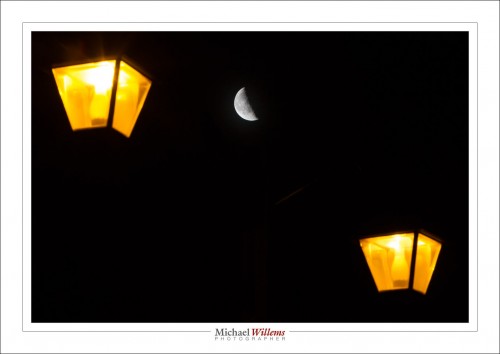…at least when you are shooting the moon. Like in this shot, made at 3AM right outside my front door:
(1/80 sec, f/10, ISO800)
What is the salient point about this photo, would you say?
For me, it is another chance to point out to you how bright the moon is. About as bright as the earth on a sunny day. Because when you see the moon it is experiencing just that: a sunny day.
For a starry night, however, you need a much longer exposure. Many stops difference. You show the stars, or you show the moon; never the two together. A rough calculation gives me:
- Moon: 400 ISO, 1/400 second, f/16 (“Sunny sixteen”) or lower (last night: f/8);
- Stars: 3200 ISO, f/1.4, 20 seconds.
So how many stops difference between those two?
- ISO: 400 to 3200 is 3 stops.
- Shutter: 1/400 to 20 seconds is around 13 stops.
- Aperture: f/8 to f/1.4 is 5 stops.
So the total difference in brightness is around 3+13+5 = 21 stops!
So until the dynamic range of our sensors and cameras is 21+ stops, you cannot show the moon and the stars in one picture. You would have to use HDR, or just combine a star picture with moon picture in Photoshop.

